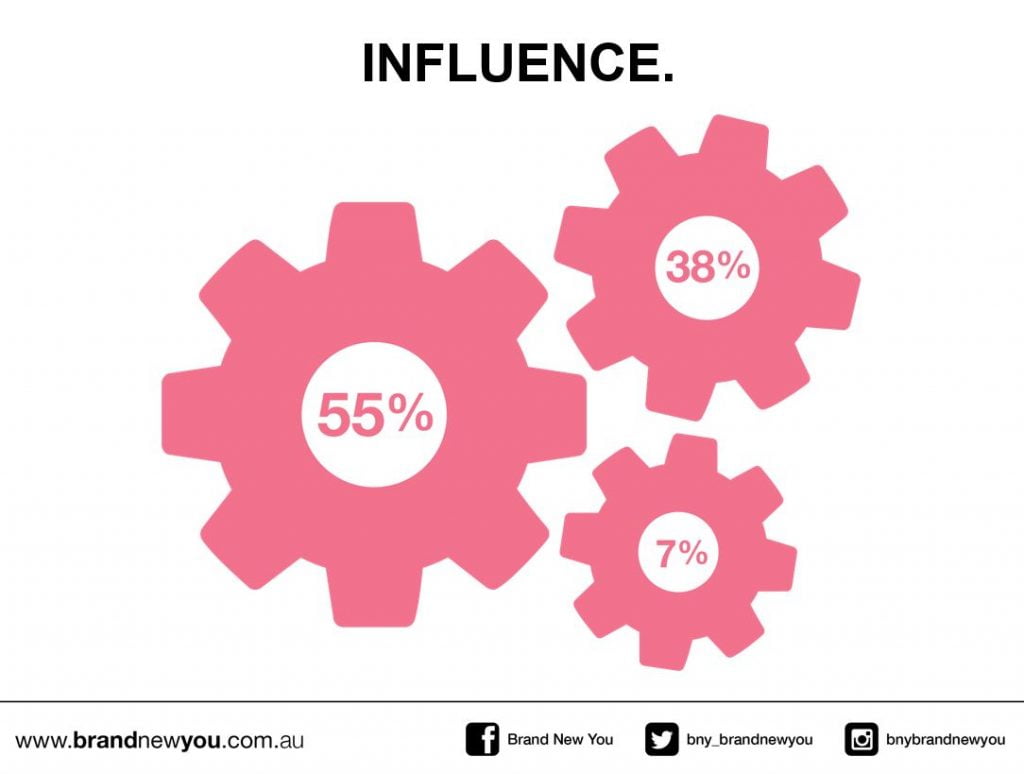That was King James I, the King who came after Elizabeth I. Even in the 1600s, we knew that actions spoke louder than words. And then there was Amy Cuddy.
We think that words are our primary form of communication, but messages often become muddled or conflicted because of what our bodies are doing. In analysing another person’s body language, there are several cues and situations that can dictate how another person is really feeling.
Confidence
For someone who is confident, they would appear standing tall with their shoulders back, solid eye contact with a smile, purposeful gestures, slow and clear speech, and a moderate to low tone of voice.
![woi_315_200919[lo]](https://womenofinfluence.org.au/wp-content/uploads/2019/09/woi_315_200919lo-150x150.jpg)
![woi_160_200919[lo]](https://womenofinfluence.org.au/wp-content/uploads/2019/09/woi_160_200919lo-150x150.jpg)
![woi_168_200919[lo]](https://womenofinfluence.org.au/wp-content/uploads/2019/09/woi_168_200919lo-150x150.jpg)
![woi_316_200919[lo]](https://womenofinfluence.org.au/wp-content/uploads/2019/09/woi_316_200919lo-150x150.jpg)
![woi_336_200919[lo]](https://womenofinfluence.org.au/wp-content/uploads/2019/09/woi_336_200919lo-150x150.jpg)

First impressions; our body language and tone of voice convey how confident we are. Typical things to look for in others are:
- Posture: standing tall or sunken
- Eye contact: solid or broken, smiling or not smiling
- Gestures with hands and arms: deliberate and purposeful, or jagged and uncoordinated
- Speech: slow and clear, or fast and muddled
- Tone of voice: low to moderate, or high pitched
Defensiveness
How do we know when our messages are falling on deaf ears? Thinking about performance appraisals or detailing responsibilities to a fellow colleague, have they ever acted in a non-receptive manner? Next time, examine their body language and look out for these signs that they may be feeling defensive:
- Hand/arm gestures are small and close to his/her body
- Minimal facial expressions
- Body physically turned away
- Arms are crossed in front
- Eyes downcast or maintain little contact
Disengagement
Working in groups or giving presentations are often a painful task. They are even more-so when your group members or audience appear to not care for anything you have said. Some common signs of disengagement are:
- Heads are down
- Eyes are glazed, or gazing at something else
- Hands may be picking at clothes, or fiddling with pens
- People may be writing or doodling
Lying
Of all the non-verbal cues that you can learn to understand, lying is one of the most important. While people may have their reasons for lying, it can be adverse to those who are being lied too. Typical signs that you’re not getting the truth include:
- Little or no eye contact, or rapid eye movements with constricted pupils
- Hand or fingers in front of his/her mouth when speaking
- His/her body is physically turned away from you,
- Unusual body gestures
- Increased breathing
- Complexion changes such as colour
- Increased perspiration
- Changes of the voice in pitch, stammering, throat clearing
These all go to the heart of your presence and the 7/38/55 rule.
Written by Emily Kucukalic, Founder and MD of Brand New You
Emily Kucukalic created the Brand New You Group in 2009. It is now Australia’s number one personal branding agency.
Emily first connected with Women of Influence nearly 10 years ago when she was a Keynote speaker in 2010.
In meetings, interviews, negotiations and more, it is important that your brand delivers its content in a manner that is deliberate, consistent and authentic. If you want to win over colleagues, investors or even your partner and kids, get in touch and we’ll show you how. Or check out the October work shop CLICK HERE






